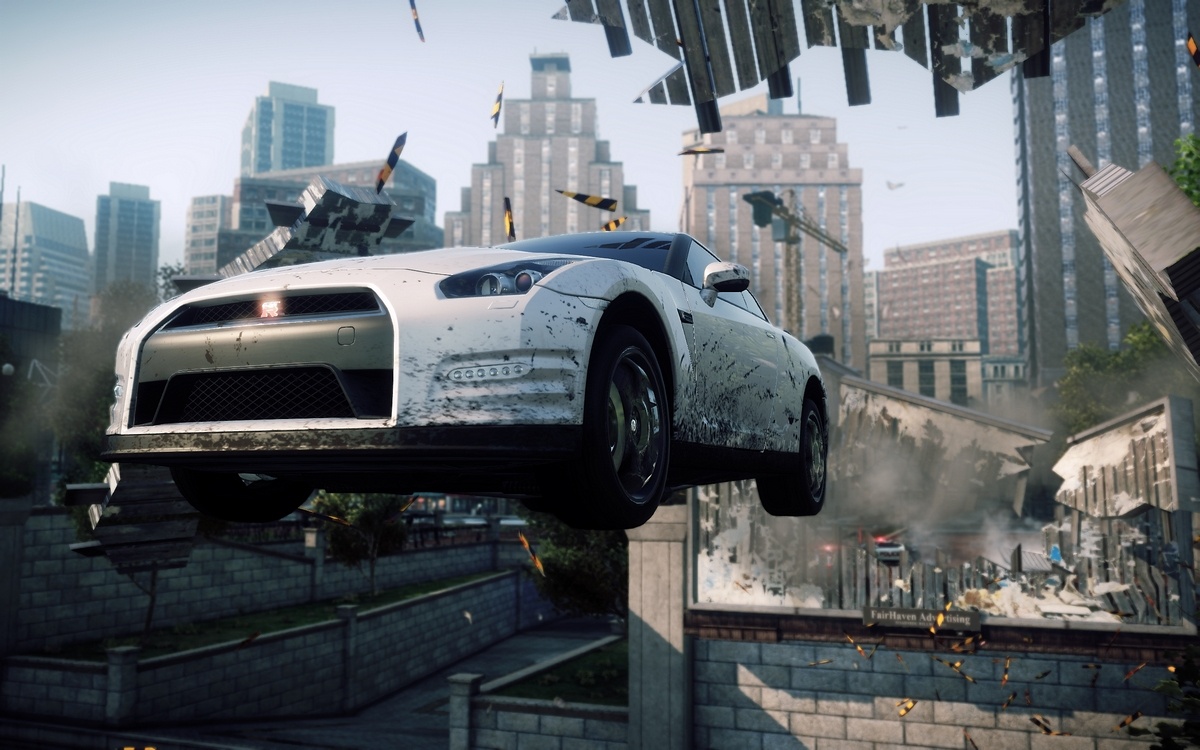Need For Speed Most Wanted: Open-World Racing With Autolog's Smarts
Criterion's Most Wanted reboot plugs Hot Pursuit's influential Autolog into Burnout Paradise's blissful racing.
Crunch time approaches at Criterion's Guildford studio. In the building they share with publisher EA, the developers of Need For Speed: Most Wanted are knuckling down to their last few weeks on this open-world racing game.
Time pressure keeps them from slicing press demos out of their unfinished game, but they serve up in-progress code with the total confidence of a well-proven racing studio. These are game makers with Burnout Paradise and Need For Speed: Hot Pursuit most recently under their belts.
"We don't like wasting time cutting press builds," pronounces Matt Webster, executive producer at Criterion. Nor do they like wasting time rehashing what’s gone before. “We don’t make sequels to other people’s games”, he says. Begging the question: why a reboot of EA Black Box’s 2005 racer?
As Webster tells it, Criterion’s experience with Burnout Paradise and with Autolog, Hot Pursuit’s influential social suite, pointed them straight to this reimagining of Most Wanted: an open-world racer based on constant social competition to be the city’s most notorious car jockey.
Though it is tagged Need For Speed, the game feels much more like Burnout Paradise than the original Most Wanted. Paradise City has been swapped for the handsome, fictional American burg of Fairhaven, but Burnout’s exhilarating slow-motion takedowns abound along all 100 miles of road and ramps, through dirt tracks, industrial lots, the harbour district, and built-up downtown area.
In single-player, you vie with AI cars in races, police chases, and other events while Criterion’s upgraded Autolog system rates your every accomplishment--from race times to speed trap records--in real time against those of your offline friends. In multiplayer, you hoon around Fairhaven with buddies in a lobbyless, seamless playlist of events, chasing each other to the next starting point in a crash-happy convoy.
In our time with the multiplayer, we are commanded by automatically generated playlist to compete for the longest drift around a circular pier and biggest jump across an unfinished elevated highway, and to battle for first place in free-for-all and team races. In all events you can excel by being either the best driver or the most effective crasher, scoring takedown points and hampering opponents with suicidal smash-ups. It is riotous, kickabout fun.
Most Wanted needs to shake up its genre, says creative director Craig Sullivan, because “ultimately [racing games] are getting a bit boring”. It’s the Criterion confidence talking again when he has a swipe at simulation racers for their pristine sameyness: “I don’t want to drive a really nice shiny car around a track too many more times because I’ve done that”.
Central to Most Wanted’s fresh outlook is making each of its shiny, destructible licensed cars available from the get-go. From the workaday mid-rangers to the fancy exotics, the absurd Ariel Atom and hulking Ford F-150 Raptor, every car is somewhere in the city and immediately up for grabs in single player.
In theory, you can be doing 250 miles an hour in the fastest car in the game within five minutes. It’s the antidote, says Sullivan, to games “all about looking at that box and seeing that nice, cool, shiny car and most of the time going, ‘I’m never going to get to drive that f**king car, unless I play the game for 40 hours’”. Once discovered, a car’s location is marked on the city map for quick-travel future access.
That’s single player, though. In multiplayer, the system of car unlocks looks a lot more like the levelling in an online shooter (“We play a lot of CoD and Battlefield,” Sullivan says). Everything you do, offline and online, earns you experience points (“speed points”), and as you level up you unlock new rides, much like weapons in Call of Duty.
As you hit milestones in a certain vehicle, on the other hand, you unlock new mods. Do enough offroad driving in one car and you’ll get its offroad tyres. Win an event in another and you’ll bag a nitrous mod. Pleasingly, mods can be added to cars on the fly. Pity the cop chasing you when you install your nitrous dump mod in mid-pursuit.

On the streets of Fairhaven there are also Burnout Paradise-style repaint drive thrus that will have your battered vehicle fixed up and looking sharp in an instant. There are smashable billboards branded with Criterion’s peer developers (BioWare, DICE) as well, waiting to be claimed (read: smashed). Security gates can be likewise battered down, and you might find a desirable motor parked on the other side.
So there’s content and collectables aplenty, and all of it bound together by Criterion’s upgraded Autolog--the magical, telemetric social engine constantly feeding you stats on how you’re doing versus your friends and keeping the party going in multiplayer’s prescribed events.
For some tastes, Criterion’s Most Wanted is too close to Paradise City to make its mark, but the layer of back-end sophistication brought by Autolog 2.0 to extended play shouldn’t be underestimated. We predict good things for a Paradise powered by Autolog’s smarts.
Got a news tip or want to contact us directly? Email news@gamespot.com

Join the conversation